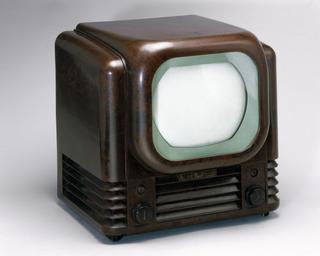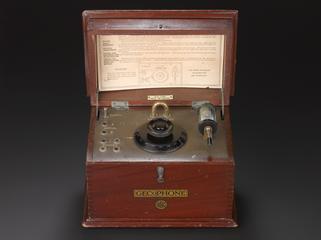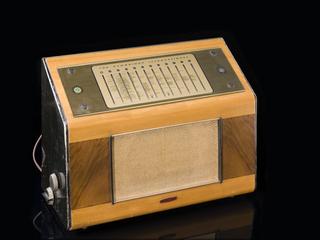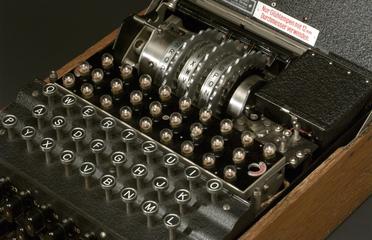
Experimental television receiver used by JL Baird in demonstration, made 1925-1926
- Made:
- 1925-1926 in United Kingdom
- inventor:
- John Logie Baird










Television receiving apparatus, made by John Logie Baird, British, made 1925-1926. Used by Baird in the demonstration given by him to members of the Royal Institution and others at Baird’s laboratories at 22 Frith Street, Soho, on 26 January 1926.
It consists of a disc, perforated with 30 holes in a spiral, which is arranged to rotate at the same time as a picture scanning disk at the transmitting end. The signals from the transmitter vary in intensity and were sent to the neon lamp in the receiver, where they were made to modulate the light from the neon lamp.
This receiving apparatus was used by John Logie Baird (1888-1946) to demonstrate his mechanical television system to experts, including members of the Royal Institution and a journalist from The Times. The demonstration took place at Baird’s laboratories at 22 Frith Street, Soho, on 26 January 1926.
This was the first demonstration of television and was a pivotal event in Baird’s life, marking the transition from his existence as a poor inventor to global recognition for ‘inventing television’. The event is also viewed as a defining moment in the development of broadcast television globally, coming at a time of social demand for new media communications as acceptance of radio broadcasting was still maturing.
Details
- Category:
- Radio Communication
- Object Number:
- 1931-57
- Materials:
- wood (unidentified), glass and brass (copper, zinc alloy)
- Measurements:
-
overall: 510 mm x 250 mm x 590 mm, 16kg
- type:
- television receiver
- copyright:
- Baird Television Company
- credit:
- From Baird Television Limited




